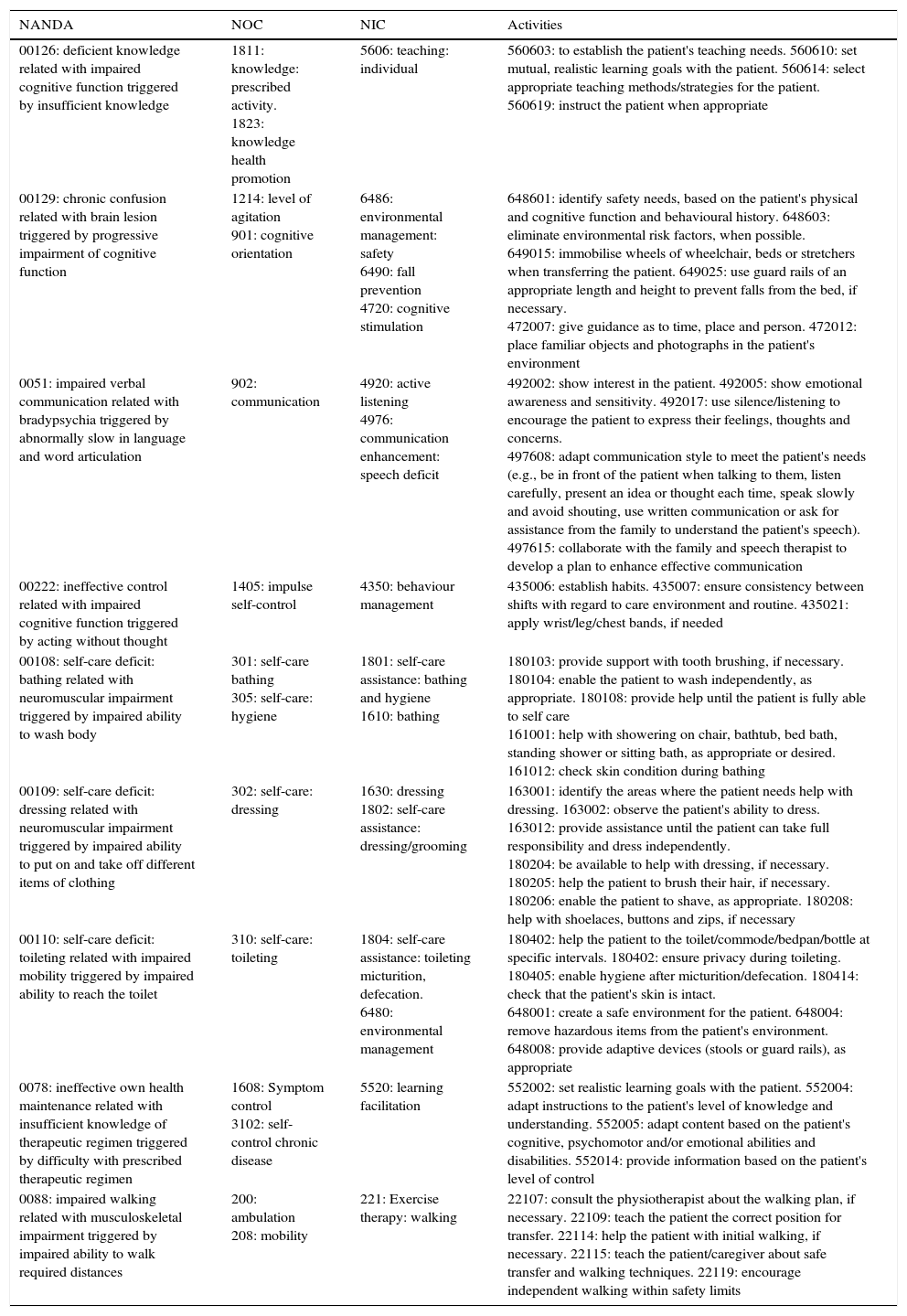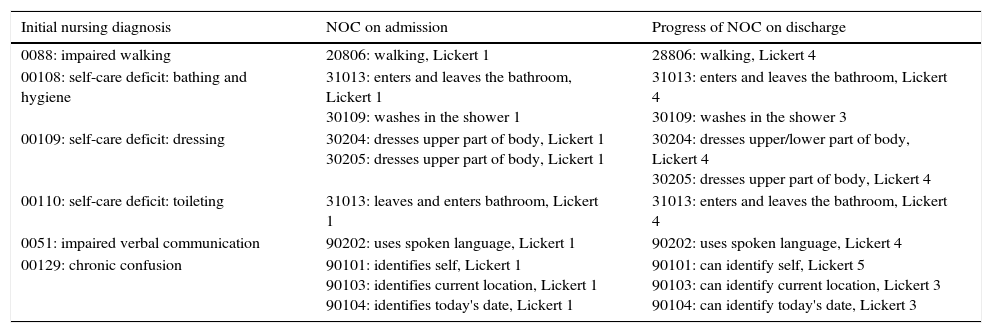Von Hippel-Lindau disease (VHL) is an autosomal dominant disease caused by a mutation of the VHL tumour suppressor gene. Patients with VHL may have cerebellar haemangioblastomas, retinal haemangioblastomas, phaeochromocytomas, renal carcinoma, pancreatic cysts, and pancreatic neuroendocrine tumours. The aim of this case report is to adapt the plan of nursing care to the patient's needs.
MethodThis is a clinical case of a patient admitted to the neuro-rehabilitation unit. The clinical history was analysed by collecting the demographic/clinical data with prior consent.
ResultsA male patient (49 years) was admitted to a neuro-rehabilitation unit for therapy after surgical excision of a haemangioblastoma of the third ventricle, as a result of VHL disease. A thorough care plan tailored to the patient's individual needs was established using NANDA-NIC-NOC nursing taxonomy. The following nursing diagnoses were identified: unilateral neglect (0123), poor knowledge (0126), acute confusion (0128), impaired verbal communication (0051), ineffective control of impulses (0222), self-care deficit: bathroom (0108), clothing (0109), and use the toilet (0110), inefficient management of health (0078) and deterioration in walking (088). At discharge, the diagnosis criteria were developed positively, and the results were improved.
ConclusionDue to VHL syndrome being considered a rare disease, knowledge of the pathophysiology has allowed us to develop a care plan that identifies the health problems in order to provide adequate nursing care to patients and their needs.
La enfermedad de Von Hippel-Lindau (VHL), es una mutación heredada del gen de supresión tumoral pVHL. Los pacientes con VHL pueden presentar hemangioblastomas cerebelosos, hemangioblastomas retinianos, feocromocitomas, cáncer de riñón, quistes pancreáticos y tumores neuroendocrinos pancreáticos. El objetivo del presente caso clínico es adaptar el plan de cuidados de enfermería a las necesidades presentadas por el paciente.
MétodoSe elabora el caso clínico de un paciente ingresado en la unidad de neurorrehabilitación. Se analizó su historia clínica para la recogida de datos demográficos/clínicos con su consentimiento previo.
ResultadosSe trata de un varón de 49 años que ingresa en la unidad para tratamiento neurorrehabilitador por intervención quirúrgica de hemangioblastoma de suelo del tercer ventrículo a causa del síndrome de VHL. Se ha efectuado un plan de cuidados adaptado a sus necesidades con la taxonomía enfermera de la NANDA-NIC-NOC. Se identificaron los siguientes diagnósticos de enfermería (DdE): desatención unilateral (0123), conocimientos deficientes (0126), confusión crónica (0129), deterioro de la comunicación verbal (0051), control de impulsos ineficaz (0222), déficit de autocuidado: baño (0108), vestido (0109) y uso del inodoro (0110), gestión ineficaz de la propia salud (0078) y deterioro de la ambulación (088). Al alta, los criterios de resultado de gran parte de los DdE activados al ingreso evolucionaron positivamente.
ConclusiónDado que el síndrome de VHL se considera una enfermedad rara, el conocimiento del presente caso ha permitido elaborar un plan de cuidados que permite identificar los problemas de salud para proporcionar unos cuidados de enfermería adecuados al paciente.
Article
Diríjase al área privada de socios de la web de la SEDENE, (https://sedene.com/revista-de-sedene/ ) y autentifíquese.






